What is 3D Printing Ceramic?

3D printing ceramic, a pivotal aspect of additive manufacturing, leverages a 3D printer to transform digital 3D models into physical ceramic objects. This Additive Manufacturing technique deposits thin layers of ceramic materials, ranging from plastic, resin, and clay slurry to powder. As each layer is meticulously placed, the object gradually takes shape. Post-printing, the “green” unfired ceramic item is dried and sintered in a kiln, enhancing its strength and cohesion.
Ceramic 3D printing is a testament to modern manufacturing prowess, facilitating intricate designs, swift prototyping, and bespoke creations. Its applications span art, design, construction, biomedicine, and more, ushering in a new era of ceramic manufacturing and artistic innovation.
How Ceramic 3D Printing Works
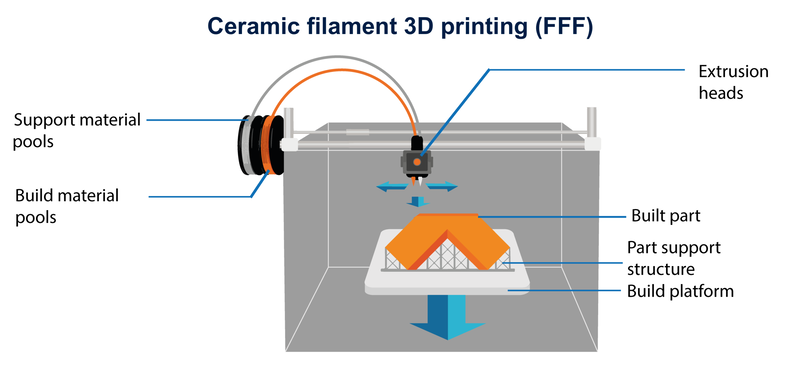
Ceramic 3D printing is an innovative branch of Additive Manufacturing that involves the layer-by-layer creation of objects using clay as the primary material.
In this process, specialized 3D printers are equipped with nozzles that extrude malleable clay to build the desired shape. These 3D printers read digital design files, which guide the precise movement of the nozzle to deposit the clay in a controlled manner.
As the clay layers are added successively, the object gradually takes form, showcasing the potential of machines in the realm of ceramic art and design. The clay, once printed, undergoes a drying phase to remove any excess moisture, ensuring structural integrity.
Subsequently, the printed object is fired in a kiln, solidifying the clay and giving it the hardness and durability characteristic of ceramics. This fusion of traditional materials like clay with modern machines and 3D printers offers artists and manufacturers new horizons in ceramic design and production.
Types of Ceramic Materials for 3D Printing
Zirconia (ZrO₂)
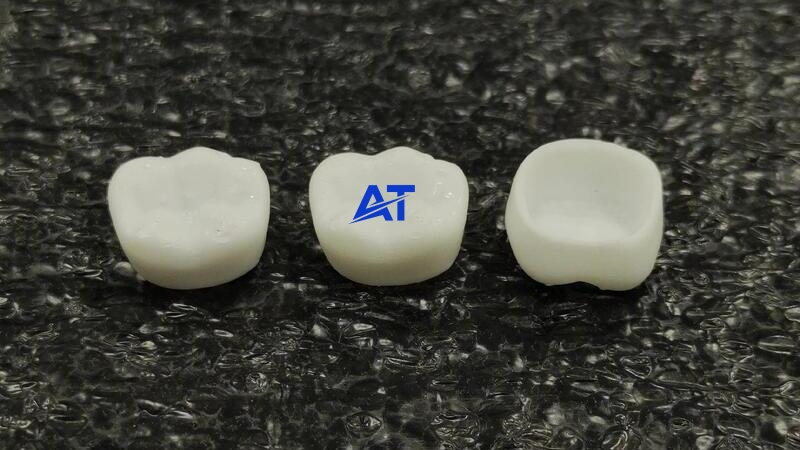
Zirconia is a strong ceramic known for its toughness and resistance to wear and tear. Commonly used in dentistry for crowns and bridges, zirconia in 3D printing offers high durability and a smooth finish. Its strength rivals that of metals, making it a popular choice for many applications.
Alumina (Al₂O₃)
A widely used ceramic, alumina is known for its excellent electrical insulation and high thermal stability. 3D printing is often used for producing components that need to withstand high temperatures, such as furnace components or electrical insulators.
Silicate Ceramics
These are ceramics based on silicate structures. Known for their excellent thermal resistance and electrical insulation properties, silicate ceramics are often used in 3D printing for creating glass-like objects, artistic pieces, and some industrial applications due to their versatility.
Hydroxyapatite (HA)
Hydroxyapatite is a calcium phosphate ceramic. In 3D printing, it’s primarily used in biomedical applications, such as bone grafts and dental implants. Its biocompatibility means it can integrate with human tissue, promoting bone growth around implants.
Benefits and Advantages of Ceramic 3D Printing
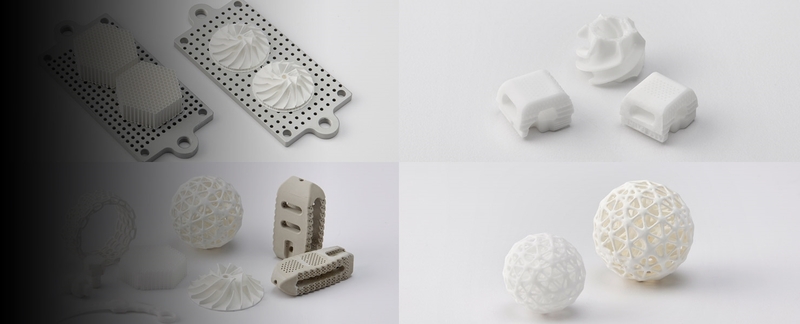
Design Flexibility and Complexity
One of the significant benefits of ceramic 3D printing is the ability to create complex and intricate geometries that are extremely difficult or impossible to produce using traditional ceramic fabrication methods. The additive layer-by-layer process enables the incorporation of delicate features, hollow or lattice-like internal structures, and complex freeform shapes unconstrained by moulds. This gives designers and artists greater freedom to realize virtually any geometry while also allowing functional optimizations like lightweight in structural ceramic components.
Rapid Prototyping and Iteration
Ceramic 3D printing accelerates the design process by facilitating rapid prototyping and iterative refinement. Parts can be printed quickly from digital files for evaluation and testing, then rapidly modified and reprinted.
This enables ceramic product developers to validate and optimize designs through multiple iterations in a fraction of the time compared to traditional prototyping techniques. With streamlined prototyping capabilities, weeks or months can be shaved off development lead times.
By enabling quick make-test-improve cycles, ceramic 3D printing allows inventors and engineers to swiftly turn ideas into optimized ceramic products and scale up efficiently. This responsive rapid prototyping is a catalytic advantage of ceramic additive manufacturing.
Cost-Effectiveness and Efficiency
Ceramic 3D printing is reshaping the economics of manufacturing. This technology offers a more cost-efficient approach by eliminating the need for costly moulds and minimizing material wastage, especially for bespoke and short-run productions.
The direct digital-to-product transition reduces lead times, ensuring projects are completed more swiftly. Businesses can thus optimize their production cycles, translating to significant savings in both time and money.
In the quest for operational efficiency and fiscal prudence, ceramic 3D printing emerges as the game-changer.
Environmental and Sustainability Benefits
Ceramic 3D printing offers significant environmental and sustainability advantages over conventional ceramic manufacturing processes. It enables on-demand production of customizable parts using minimal material. This reduces resource use, energy consumption, and waste versus traditional subtractive techniques that generate excess scrap. The technology’s digital nature also facilitates parts repair rather than full re-fabrication. With minimized raw material transportation and the ability to reuse ceramic powder, ceramic 3D printing’s localized production helps reduce carbon emissions associated with global supply chains. Overall, its additive approach aligns with circular economy principles, supporting environmentally responsible ceramic manufacturing.
Comparing CNC Machining Ceramic vs. 3D Printed Ceramics
| Criteria | Ceramic CNC Machining | Ceramic 3D Printing |
|---|---|---|
| Methodology | Subtractive; removes material from a solid block | Subtractive: removes material from a solid block |
| Design Complexity | Limited by tool access and geometry | Allows for intricate and complex geometries |
| Waste Generation | Higher due to subtractive nature | Additive: builds up material layer by layer |
| Setup Time | Longer for toolpath planning and setup | Relatively quicker with digital design import |
| Production Speed | Variable, often slower for complex designs | Consistent, depending on the height of the object |
| Tolerance & Precision | High precision achievable | Accuracy is generally lower than CNC machining |
| Material Options | Limited to machinable ceramics | Lower material is used only where needed |
| Suitability for Prototyping | Best for final production runs or large quantities | Expanding the range of printable ceramic materials |
- Subtractive process using cutting tools to remove material from ceramic blank
- Limited by tool accessibility – internal features difficult
- High material waste from machining
- Excellent surface finish and high accuracy
- Low porosity and high-strength parts
- Limited design complexity, organic shapes challenging
- Setup costs are high but low incremental part cost
- Ideal for small-medium production runs
3D Printing Ceramics
- Additive process building up parts layer-by-layer
- Enables complex geometries inaccessible to CNC
- Minimal material waste
- Surface finish and accuracy lower than CNC
- Higher porosity requires sintering to densify
- Excellent for complex organic, custom designs
- Lower setup costs but higher per-part cost
- Ideal for small batch sizes and rapid prototyping
In summary, CNC machining produces high-precision, high-strength ceramic parts ideal for small-medium production runs, while 3D printing enables complex geometries suitable for rapid prototyping and small batches. Combining both processes can be beneficial.
Tips for Successfully 3D Printing Ceramics
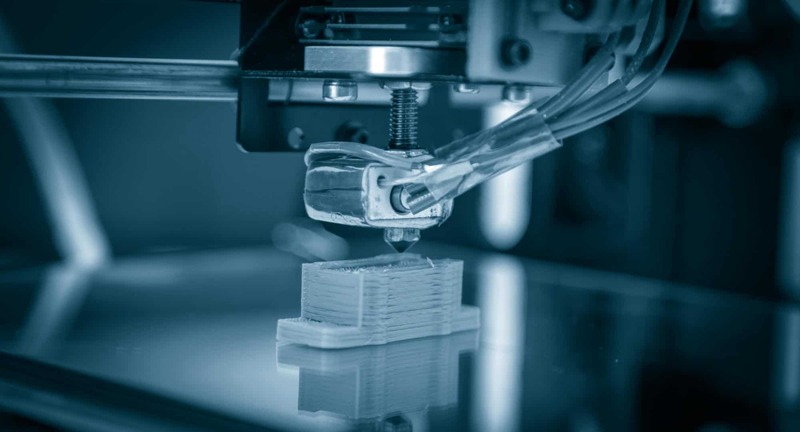
1. Calibration is Key: Before initiating any project, ensure that your 3D printing machine is calibrated correctly. Proper machine calibration guarantees that the layers align seamlessly, resulting in a smoother, more consistent print.
2. Material Consistency: The ceramic slurry should have a consistent viscosity. Too thick might clog the nozzle; too thin, and the printed object may lack structural integrity.
3. Adequate Drying Time: Allow each layer to dry sufficiently before adding the next. This prevents warping and deformation, especially in larger prints.
4. Mind the Temperature: Ensure the printing environment is free from sudden temperature changes. Ceramics are sensitive to thermal fluctuations, which can lead to cracks.
5. Optimal Layer Height: Choose a layer height that balances detail and structural strength. Too thin might compromise the object’s strength, while too thick might sacrifice detail.
6. Post-Processing: After printing, properly firing the ceramic object in a kiln is essential. This process solidifies the ceramic and enhances its strength.
7. Support Structures: Use support structures for designs with overhangs or intricate details. These can be removed post-printing and ensure the design retains its intended shape.
8. Design for Shrinkage: Ceramics shrink during the firing process. Factor this into your design by slightly enlarging the dimensions for this shrinkage.
9. Opt for Hollow Designs: To save on material and reduce the risk of cracking during firing, design objects to be hollow rather than solid.
10. Clean the Nozzle: Regularly clean the printer’s nozzle to prevent clogs and ensure a consistent flow of the ceramic slurry.
Challenges and Limits in Ceramic 3D Printing
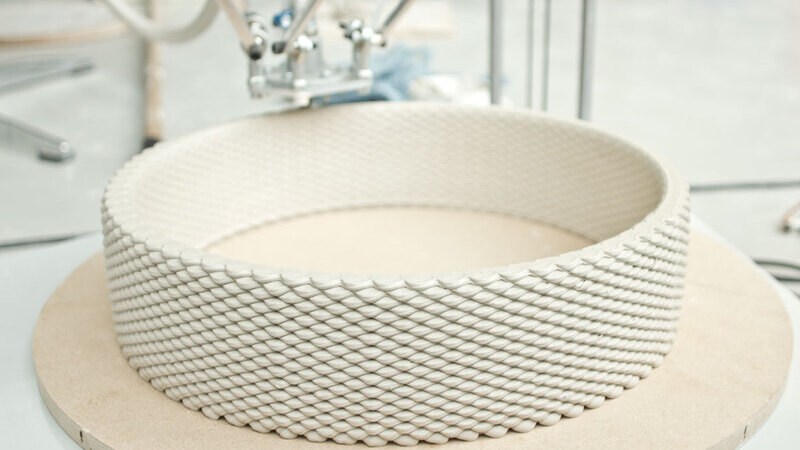
1. Material Shrinkage: Ceramic materials naturally shrink during the drying and firing. This shrinkage can alter the final dimensions of the printed object, potentially leading to discrepancies between the design and the finished product. Designers must anticipate and adjust for this factor, but achieving perfect accuracy can be challenging.
2. Structural Integrity: Printing ceramics layer by layer can sometimes result in weaker bonds between layers, especially if there’s uneven drying or improper calibration. This can make the final object more susceptible to cracks or fractures under stress.
3. Limited Material Choices: While the range of printable ceramic materials is expanding, it’s still relatively limited compared to CNC Machining materials. Some ceramics might not be available in a suitable form for 3D printing, restricting design possibilities.
4. Post-Processing Complexity: Ceramics require firing in a kiln to gain their final strength and finish after printing. This process demands careful temperature control and can be time-consuming. Improper firing can result in warping, cracks, or even complete failure of the piece.
5. Design Constraints: Though 3D printing allows for intricate designs, some limitations remain, especially concerning overhangs and unsupported structures. These constraints can necessitate using support materials, which might be challenging to remove without damaging the ceramic piece.
Applications of Ceramic 3D Printing
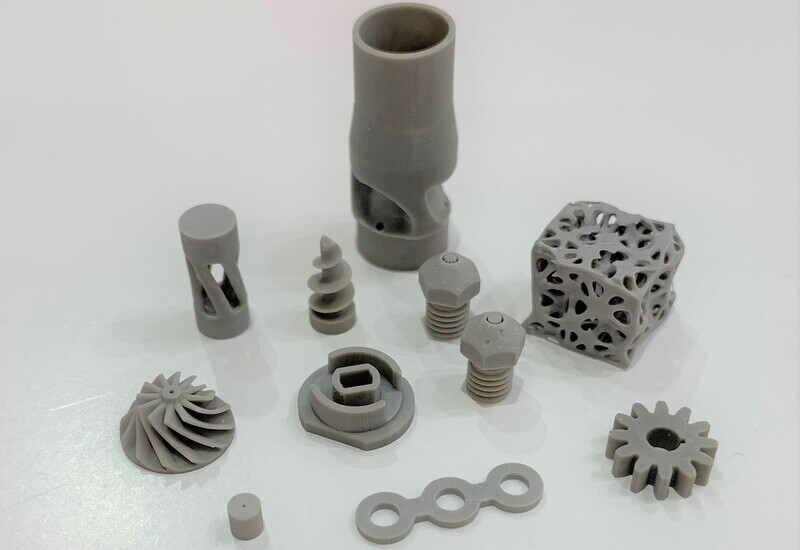
Aerospace Industry and Automotive Industry
Ceramics are prized in the aerospace and automotive sectors for their heat resistance, lightweight nature, and durability.
- Heat Shields: Ceramic 3D printing allows for the creation of custom heat shields for spacecraft or high-performance vehicles. These shields can be optimized for specific heat profiles, ensuring maximum protection.
- Engine Components: Parts of aircraft or car engines that require high heat resistance can be made from ceramics. 3D printing these components allows for rapid prototyping and testing of new engine designs.
- Insulating Components: Electrical systems in both aircraft and vehicles require insulation, especially in high-temperature environments. 3D-printed ceramic components can be tailored to fit specific systems, ensuring optimal performance.
- Lightweighting: In industries where every gram matters, such as aerospace, ceramic 3D printed parts can replace heavier metal components, reducing the overall weight and improving efficiency.
Medical and Dental Industry

Ceramic 3D printing has made a significant impact in the field of medical implants. Materials like hydroxyapatite, a naturally occurring mineral form of calcium apatite, are biocompatible and can seamlessly integrate with human tissue.
- Dental Implants: Traditional methods of creating dental crowns, bridges, or even full dental implants can be time-consuming and may not always ensure a perfect fit. With ceramic 3D printing, dentists can obtain a precise digital impression of a patient’s mouth and print a custom-fit implant, reducing discomfort and improving durability.
- Bone Grafts: For patients with bone defects or injuries, 3D printed ceramic scaffolds can be used to support the growth of new bone tissue. These scaffolds can be designed to match the patient’s anatomy perfectly, promoting faster healing and integration.
- Joint Replacements: Traditional joint replacements often come in standard sizes, which may not fit all patients perfectly. Ceramic 3D printing enables the creation of joint components tailored to individual anatomical structures, ensuring better movement and reduced wear.
Art and Sculpture
The world of art and sculpture has been enriched by the possibilities offered by ceramic 3D printing.
- Intricate Designs: Artists can now produce works with complex geometries and intricate patterns that would be nearly impossible or highly time-consuming with traditional ceramic methods.
- Customization: Artists can make on-the-fly adjustments to their designs, allowing for greater experimentation and iterative creation.
- Reproductions: Historical or damaged artworks can be digitally scanned and reproduced with high fidelity using ceramic 3D printing, aiding in restoration or educational purposes.
- Collaborative Art: Digital platforms allow artists from different locations to collaborate on a single piece, merging their styles and visions into unique 3D-printed ceramic artworks.
How to Choose the Right Ceramic 3D Print Services Provider
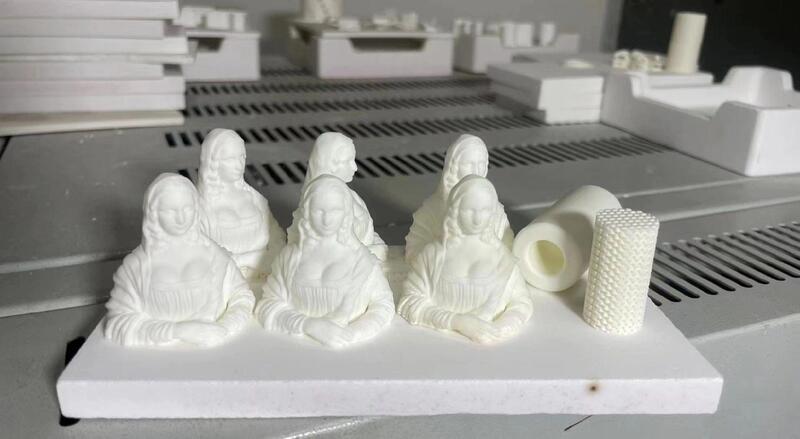
When choosing the right ceramic 3D print services provider, it’s essential to consider their expertise, showcased by a diverse portfolio and positive client testimonials. Ensure they utilize advanced technology, offering up-to-date 3D printers and sophisticated software for optimal design execution.
The provider should be flexible, offering tailored solutions and design assistance to meet your needs. Quality control is paramount, so look for consistent print quality, high-grade materials, and post-processing services like kiln firing. Transparent pricing without hidden fees, quick turnaround times, and robust pre- and post-print customer support are vital.
Finally, consider their commitment to eco-friendly practices and their willingness to protect your intellectual property through mechanisms like non-disclosure agreements.
Dive into the future of ceramic craftsmanship with AT-Machining, a pioneer in ceramic 3D printing services and manufacture. Leveraging cutting-edge technology and unmatched expertise, we guarantee precision, quality, and innovation in each endeavour. AT-Machining is your trusted ally for unparalleled ceramic 3D printing solutions, from prototyping to crafting finished products.
Conclusion
In manufacturing, 3D printing ceramics is a game-changing solution, delivering unmatched design flexibility, operational efficiency, and sustainability advantages. Grasping the intricacies of this technology, from judicious material selection to vital post-processing steps, is paramount. As sectors like aerospace, art, and healthcare increasingly lean towards ceramic 3D printing, the decision to partner with the right solution provider becomes pivotal.
AT-Machining is synonymous with excellence and forward-thinking innovation in this dynamic domain. Engage with us to bring your next project to life!


